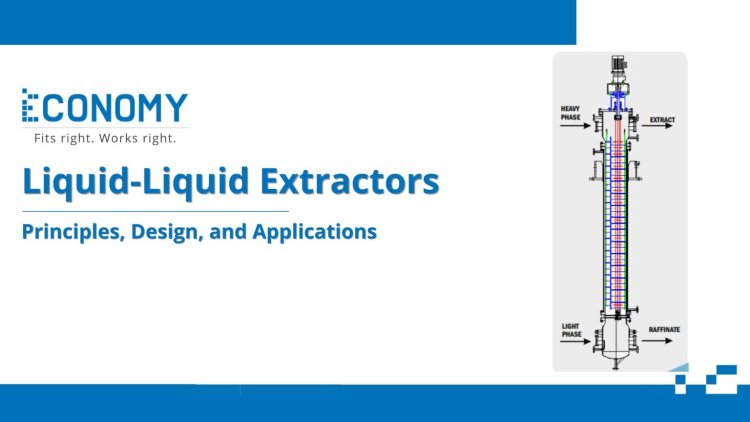Liquid-Liquid Extractors: Principles, Design, and Applications
Share this Post to earn Money ( Upto ₹100 per 1000 Views )

Liquid-liquid extraction (LLE) is a separation technique that is widely used in the chemical, pharmaceutical, and biochemical industries to separate components based on their differing solubilities in two immiscible liquids, usually water and an organic solvent. This method is particularly useful for separating compounds that are sensitive to heat, as it can be carried out at ambient temperatures, thus preserving the integrity of temperature-sensitive molecules. Understanding the principles, design considerations, and applications of liquid-liquid extractors is crucial for optimizing this process for specific separation tasks.
Principles of Liquid-Liquid Extraction
The fundamental principles of liquid-liquid extraction is the distribution of a solute between two immiscible liquid phases in accordance with the solute's partition coefficient (K), which is a ratio of its concentrations in these two phases at equilibrium. The efficiency of the extraction process depends on several factors, including the choice of solvent, the volume ratio of the two phases, the temperature, and the agitation or mixing intensity.
Design Considerations
1. Choice of Solvent
The solvent should have a high selectivity for the desired component, be immiscible with the feed solution, and have a different density to allow for easy phase separation. Additionally, considerations such as solvent cost, toxicity, and ease of recovery are critical for the overall efficiency and sustainability of the process.
2. Type of Extractor
Liquid-liquid extractors can be categorized into two main types: batch and continuous. Batch extractors are suitable for small-scale operations or processes that require flexibility, while continuous extractors, such as mixer-settlers, packed columns, and centrifugal extractors, are used in large-scale applications where high throughput is necessary.
3. Equipment Design
The design of liquid liquid extractor equipment involves considerations of phase dispersion, interfacial area for mass transfer, phase separation, and control of residence times. For continuous operations, the choice between co-current and counter-current flow patterns also affects the efficiency of the separation.
Applications
1. Pharmaceutical Industry
Liquid-liquid extraction is used for the purification of pharmaceuticals, where it helps in removing impurities or concentrating active ingredients. It is especially valuable for extracting heat-sensitive biological compounds, such as proteins and enzymes.
2. Chemical Industry
In the chemical industry, LLE is employed for the recovery of acids, bases, and other valuable components from process streams. It is also used in the separation and purification of organic compounds, such as in the production of fine chemicals and intermediates.
3. Environmental Engineering
Liquid-liquid extraction plays a role in the treatment of wastewater and the recovery of valuable or hazardous components from industrial effluents. It is used for removing organic pollutants, heavy metals, and other contaminants from water sources.
4. Food and Beverage Industry
In the food and beverage industry, LLE is utilized for the extraction of flavors, fragrances, and nutritional compounds. This includes the extraction of essential oils, vitamins, and antioxidants from natural sources.
Conclusion
Liquid-liquid extraction is a versatile and widely used separation technique with numerous applications across various industries. Its efficiency is influenced by the choice of solvent, design of the extractor, and the operating conditions. By understanding and optimizing these factors, liquid-liquid extraction can be effectively employed for the selective separation and purification of components, contributing to the development of high-quality products in an environmentally sustainable manner.















